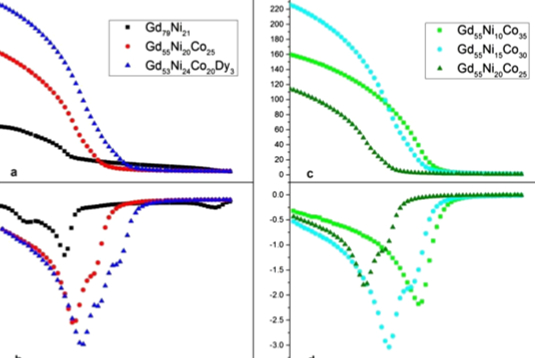Abstract
We have studied the magnetocaloric effect (MCE) of Gd-based amorphous microwires from binary to quaternary system. We find that with increase of components from binary GdNi to ternary GdNiCo, there is a significant increase in magnetic entropy change (ΔSm) from 1.43 to 2.73 J⋅kg−1⋅K−1 and an increase of temperature interval from 90K to 115K; further comparison between the quaternary GdNiCoDy and ternary GdNiCo shows a continuing increase of temperature interval while retaining the similar ΔSm. Such an improvement of MCE can be ascribed to the enhancement of amorphicity with increasing number of components, which leads to the improved magnetic softness and homogeneity. The increase of the Curie temperature with increasing number of components also indicates the enhanced Ruderman-Kittel-Kasuya-Yosida (RKKY) magnetic interactions caused by the addition of alloying elements as comparing binary, ternary and quaternary system or by optimized composition in terms of such as Ni/Co ratio in a typical ternary system of GdNiCo. These results have demonstrated that appropriately designed Gd-based microwires are very useful for active magnetic refrigeration in the liquid nitrogen temperature regime.

Wang Y F, Qin F X, Wang Y H, et al. Magnetocaloric effect of Gd-based microwires from binary to quaternary system[J]. Aip Advances, 2017, 7(5):056422.


